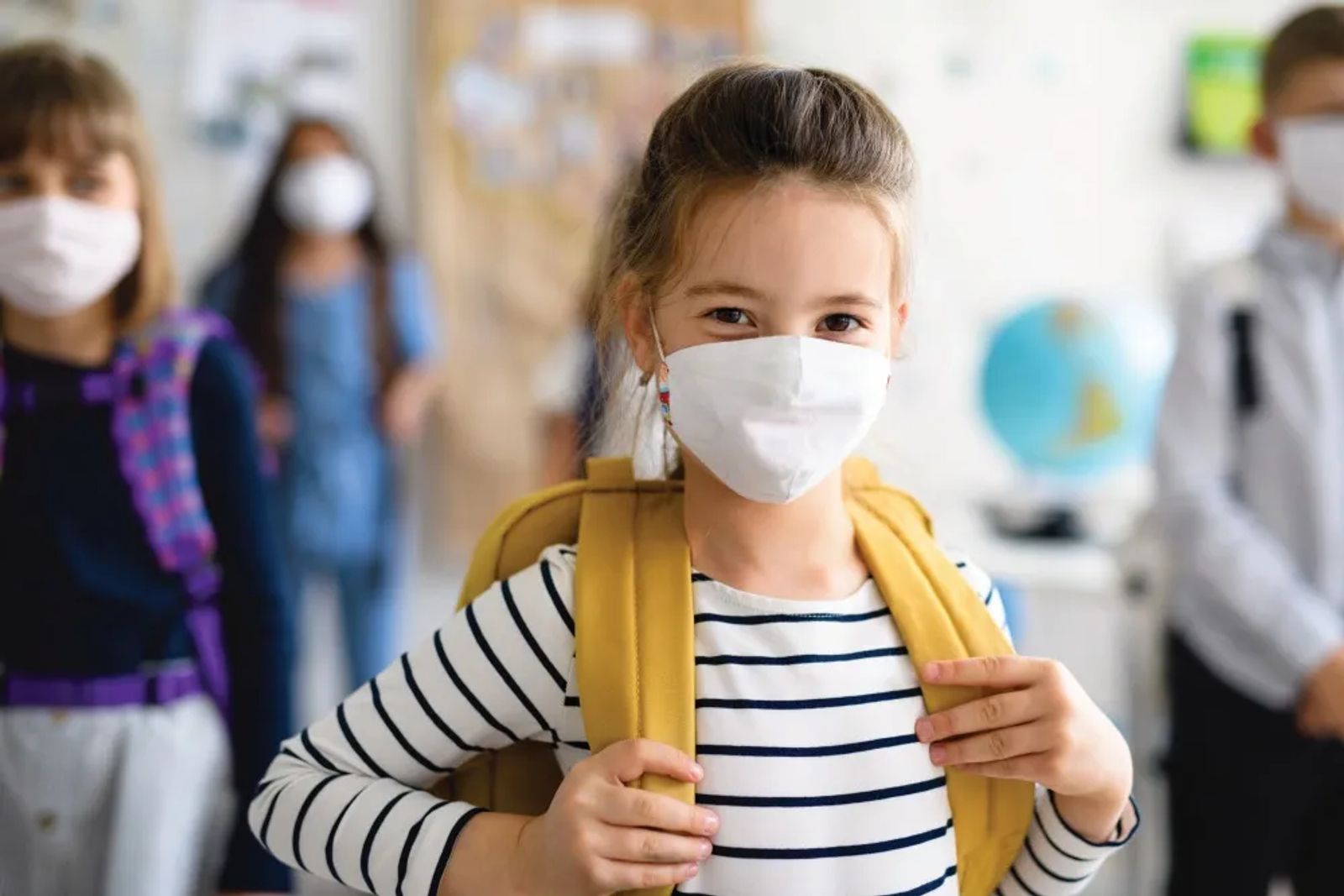
5 Expert Tips for a Safe Return to School
August 2020 | by Dr. Katy Lysinger, MD, FAAP MTAAP Member at Large
School is vitally important for children's learning and their social and emotional development, and it should be a priority of our society to make a safe return to in-person school possible for our children. Pediatricians urge parents to take steps now for a safe return to school.
1) Mask up:
Love them or hate them; they are going to be with us for a while. COVID-19 is a new virus, and one thing we have learned over the last six months is that masks are an effective tool in decreasing its spread. Pediatricians recommend all school-age children and teachers wear masks when they return to school in the fall.
Wearing masks may take some practice for young children. Start now by finding a mask that fits well, making adjustments as needed. For younger children, eyeglass straps can be attached to ear loops to keep masks more securely in place and prevent losing them.
Have kids pick out their mask design, show them what they look like in the mirror and PRACTICE. Go for walks outside in masks; then, they can safely take off the face coverings if they need breaks—work on wearing masks for longer and longer periods. Remind them not to touch their face.
Parents should model good behavior. If they see you touching your face, removing them to talk, wearing around your chin, or complaining that they’re uncomfortable, your child will follow your lead and struggle to wear them. There are only a small number of children who cannot wear masks. Children under 2 should not wear masks without supervision. The straps can be choking hazards for toddlers, and babies should not have anything covering their face if you cannot watch them. Children with asthma or other respiratory issues can and should still wear masks; they are likely more susceptible to COVID-19 and benefit the most from wearing them.
2) Social distancing:
Schools have been practicing social distancing for years. At my school, the mantra was "keep your hands, feet, and other objects to yourself." And we have been hearing "social distancing" for months, but kids will need to learn exactly what that means, in terms they can understand.
Talk to your kids about not sharing food, drinks, pencils, instruments, gum, or their mask. Explain 6 feet away from others as three giant steps or two pool noodles. Remind them to greet friends and teachers with big waves, not big hugs. Continue to practice good hand hygiene: wash before eating, after playing with friends, and before and after removing your mask. It eventually becomes automatic.
3) Vaccinations:
Just like masks, immunizations will be an important tool to decrease the spread of infection. Ensuring children and adults are up-to-date on all vaccines will prevent hospitalizations for vaccine-preventable diseases like pertussis, measles, and influenza, further unburdening the medical system.
If your child missed well visits during community shut-downs, reschedule now. Children starting school for the first time as kindergarteners and children entering 7th grade have required immunizations. Clinics are taking extensive steps to keep you and your child safe; please call your child's office to get your well visit scheduled.
Don’t forget everyone will need a flu vaccine this fall. The flu virus spreads among children more so than adults -- the opposite of the coronavirus that causes COVID-19. Once school starts, a fever and a cough will mean staying home and getting tested. Flu vaccination decreases the frequency and severity of flu illness and will help keep school disruption to a minimum.
4) Sleep:
If your kids are like mine, maintaining a regular schedule in the summer is more of a challenge, and even more so as they haven't been in a school routine for months. Start making adjustments to their schedule now so that a healthy sleep routine is reestablished before school starts. Have children go to bed and wake up as close to your typical school schedule as possible - for teens, this means no all-night video game sessions on the weekend. If your kids are having trouble sleeping, turn off all screens (video games, phones, TV) at least an hour before bed. At bedtime, turn lights low, do quiet activities, and stick to a consistent schedule.
No one knows exactly what school will look like in the fall, but it may be some combination of in-person and at-home learning. Kids need to stick to a regular schedule even for at-home learning, get up at the same time, and get dressed just like you would for a regular school day.
5) Have a backup plan:
No matter what, school will look very different this fall. To reduce class size, children may be attending school some days in-person, some days at home. Families may need to get creative with work schedules and daycare to accommodate the new schedule.
Even if your school returns full time in-person, there will likely be many more days at home due to illness. COVID-19 can present various symptoms that mimic other illnesses, like cough, sore throat, and diarrhea. Thus, it is recommended that ill children remain home from school until they are entirely symptom-free (possibly up to 10 days), meaning children may miss significantly more school with every illness than in the past. There will be no more going to school with “just a cold.” Parents of young children will need childcare options when their children are home sick.
Parents, children, and teachers all long for a return to normal school. We should all do our part -- mask up, wash hands, and maintain social distancing -- to eliminate the spread of COVID-19 and make this possible. Regardless of the format school will take in the fall, parents can take steps to help keep their kids safe and healthy as possible.
Originally printed in the August 2020 issue of Simply Local Magazine
Never miss an issue, check out SLM's digital editions here!





